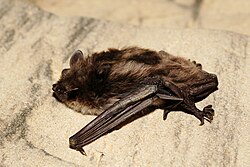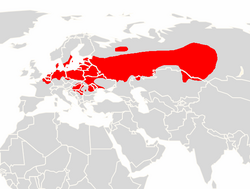| Pond bat | |
|---|---|
 | |
| Scientific classification | |
| Kingdom: | Animalia |
| Phylum: | Chordata |
| Class: | Mammalia |
| Order: | Chiroptera |
| Family: | Vespertilionidae |
| Genus: | Myotis |
| Species: | M. dasycneme |
| Binomial name | |
| Myotis dasycneme (Boie, 1825) | |
 | |
The pond bat (Myotis dasycneme) is a species of vesper bat. It is found in Eurasia from France to Russia and Kazakhstan.

